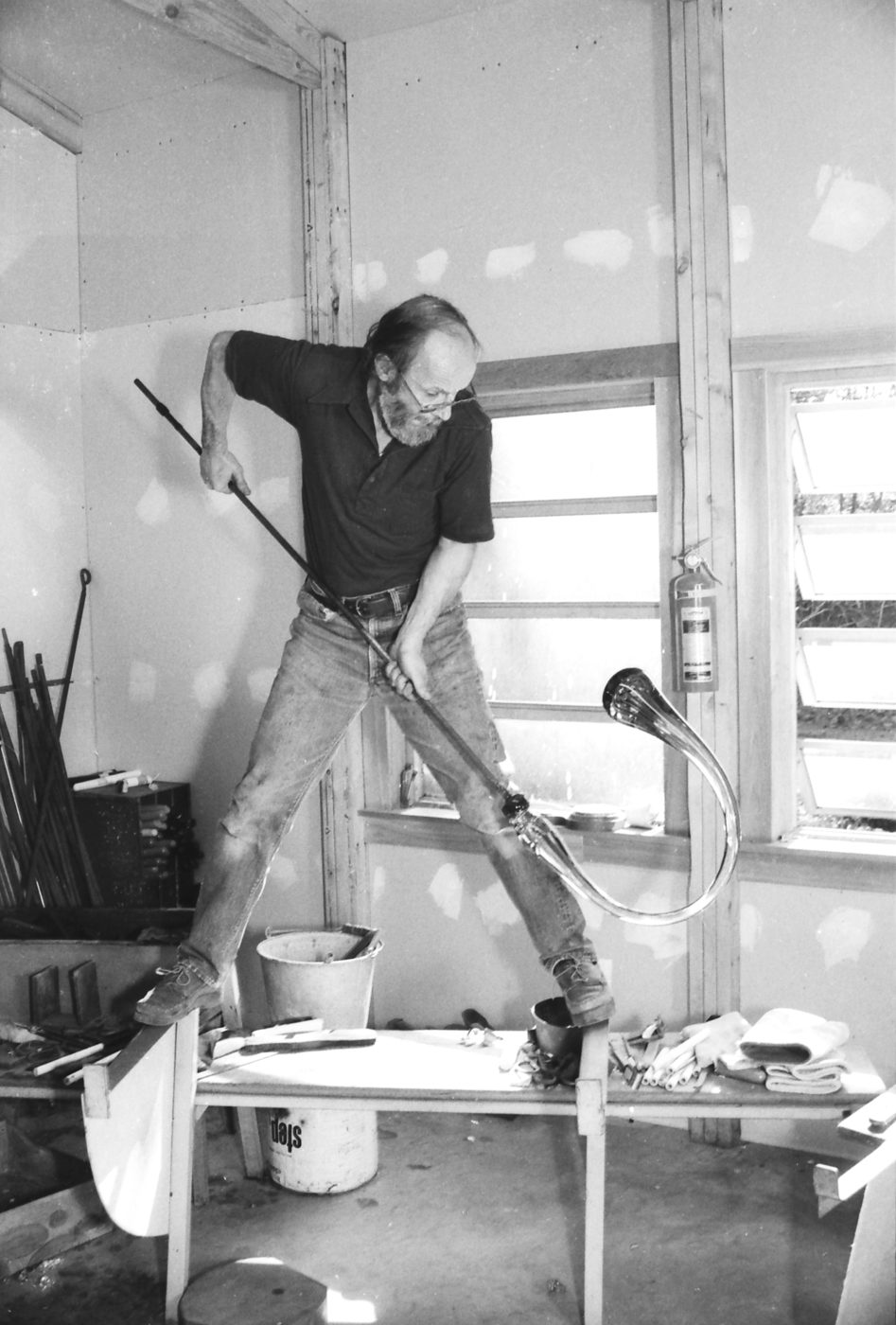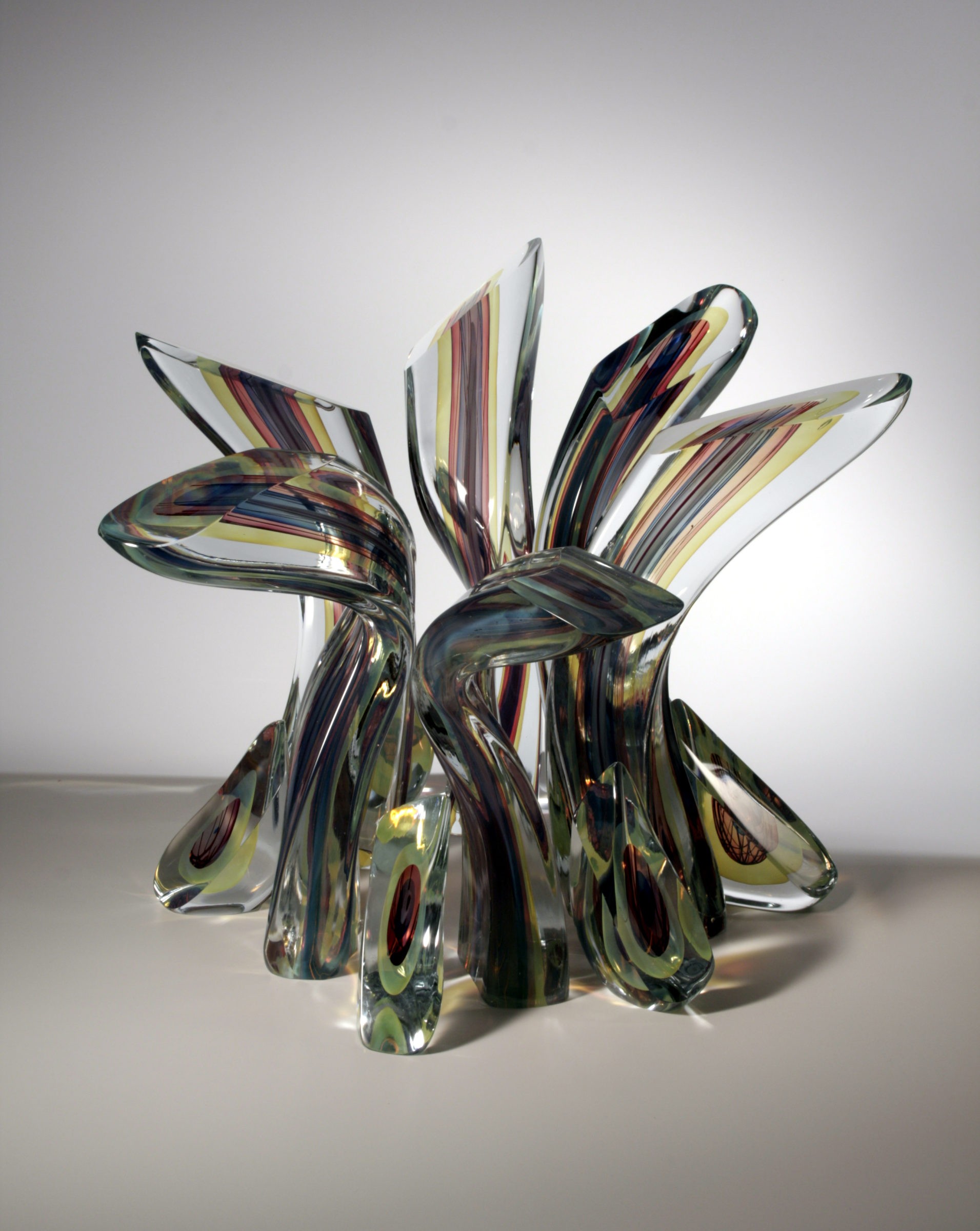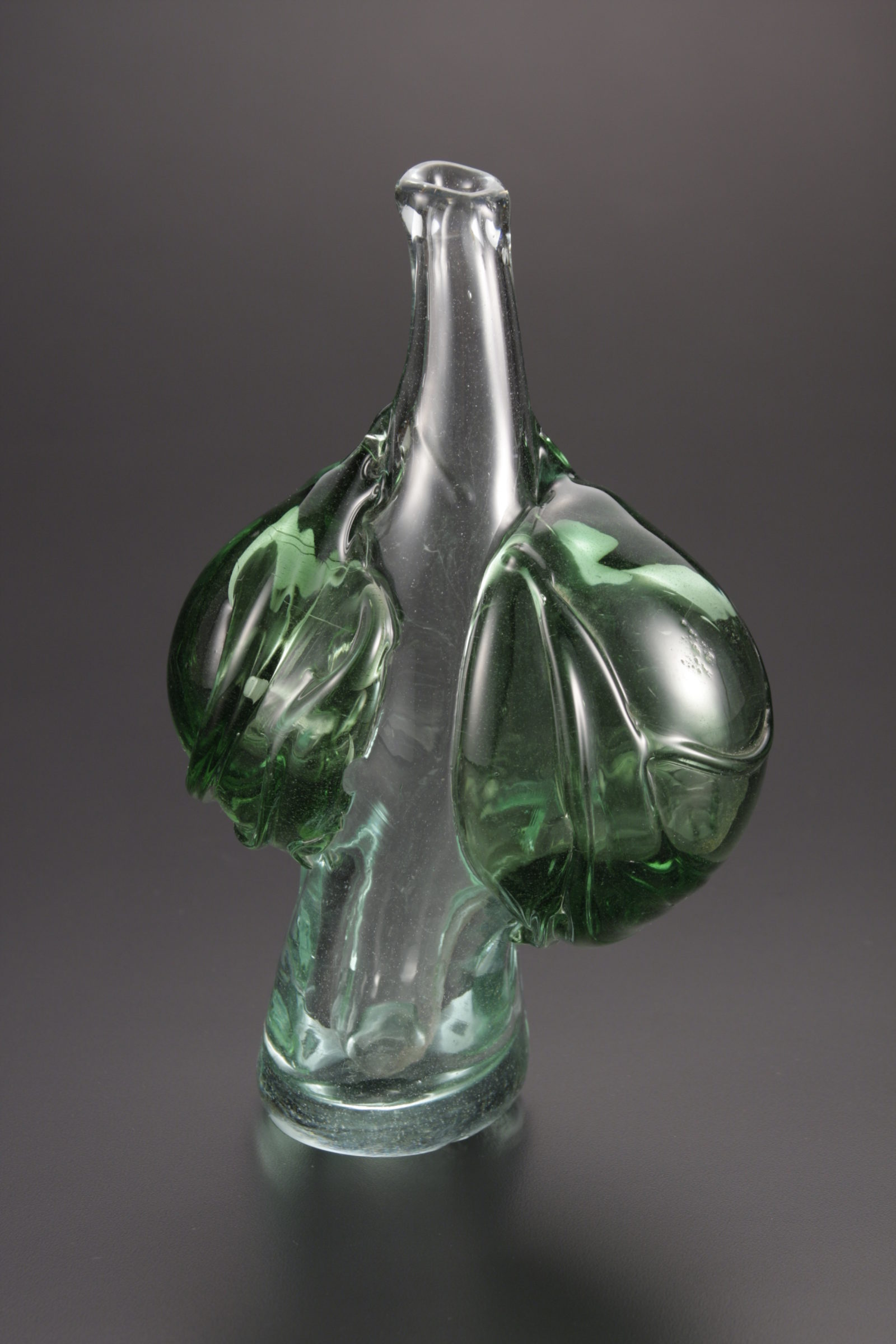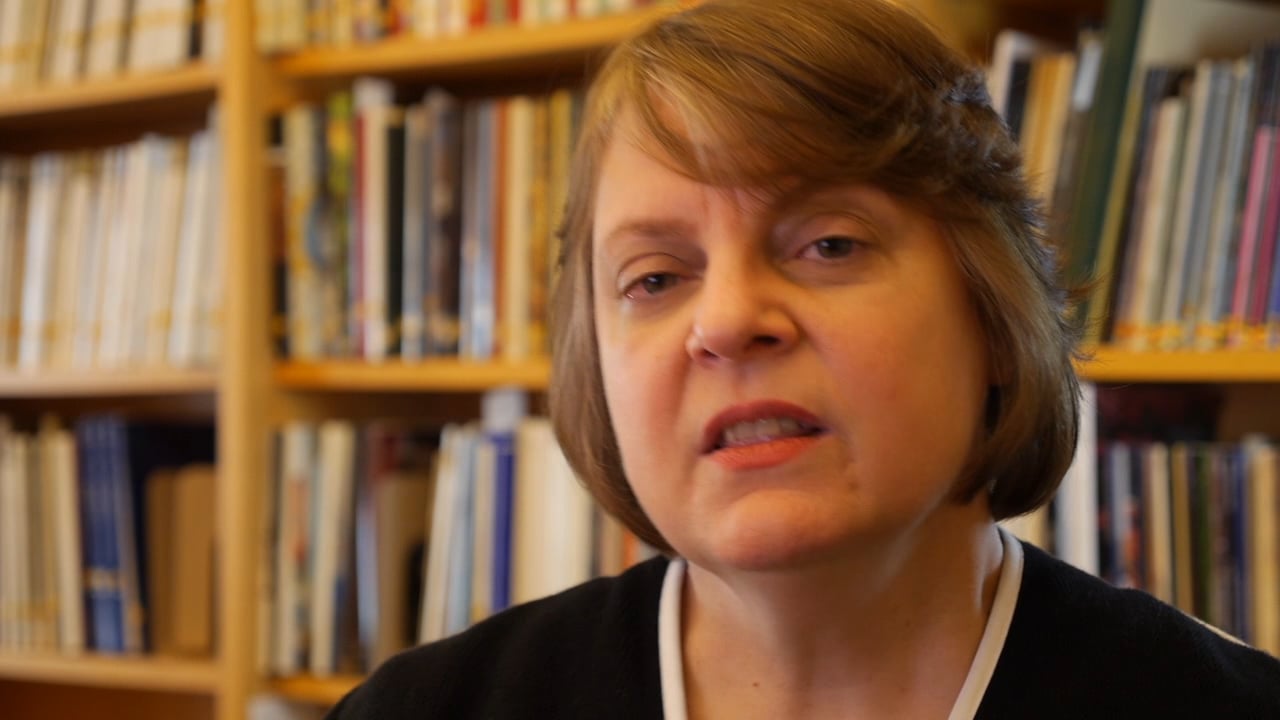
Photo: John Littleton.
Harvey Littleton
American artist Harvey K. Littleton (1922–2013) earned a BD in industrial design from the University of Michigan in 1947 and an MFA from the Cranbrook Academy of Art in 1951 before joining the faculty at the University of Wisconsin-Madison (UW-Madison) as a ceramist. In the late 1950s, Littleton began exploring the possibility of glassblowing in a studio setting; two glassblowing workshops he organized at the Toledo Museum of Art in 1962 are widely credited as founding moments in the American studio glass movement. Littleton went on to establish the first university-level glass program in the United States at UW-Madison and had a significant impact on the glass field as an artist and teacher. He established a studio and printing facility in Spruce Pine, North Carolina, in 1976, after he retired from teaching, and later founded the Spruce Pine Batch Company, which has been making glass batch since 1986.
Works

Blue Lyrical, 1988. H: 22 in, W: 20 in, D: 12 in. Image courtesy of John Littleton.

Crown II, 1984. H: 12.5 in, W: 23 in, D: 21 in. Image courtesy of John Littleton.

Anthropomorphic Vase, 1962. Image courtesy of John Littleton.
Media



James Carpenter talks about Dominick Labino and Harvey Littleton bringing glass to university programs.
0:15 Transcript